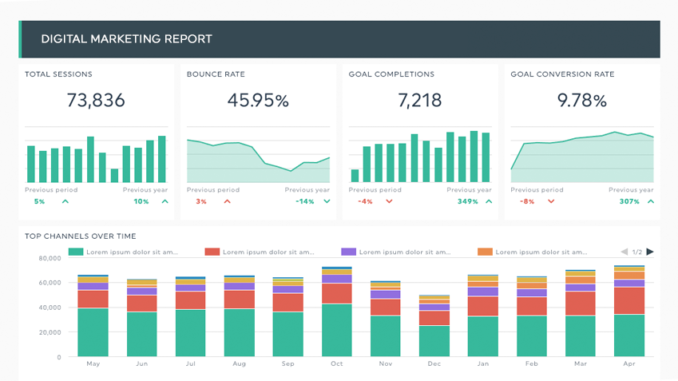
Digital marketing is getting more vast and complex every single day; there are always new tools, websites, types of ads and content available. With all these digital marketing possibilities comes a plethora of data that you now need to keep track of. It can become quite overwhelming if you don’t know which Key Performance Indicators (KPIs) to track.
To help you out, here’s a quick guide on how to choose the right for all your digital marketing efforts.
First step: Determine your goals
Even with the best strategy, you still need to track the right KPIs to know if your efforts are working as expected and to steer them in the right direction if they’re not. To do so, you first need to go back to your goals.
The important KPIs for your digital marketing are the ones that will give you the best insight on your goals.
So the first step is to determine what your goals are. Make sure the goals in question are SMART (Specific, Measurable, Achievable, Realistic, and Timely). With your goal in mind, just ask yourself: How can I achieve this?
Let’s say that your goal is to increase e-commerce sales by 10% before the end of the year. You might do campaigns to bring more qualified traffic, and in that case, you should check KPIs such as Number of sales, Conversion rate, website traffic, Cost-per-click, etc. These are all KPIs that could play a role in how you will achieve this goal.
Second step: Choose relevant KPIs
Now that you have your goal in mind, and have an idea of the kind of metrics you should track. Make sure you’re only tracking the most relevant KPIs.
It might be tempting however to track as much data as possible, even data that isn’t necessarily related to your goals. This type of data is called vanity metrics, and even though it might look great to track your number of likes, followers, or traffic, if your goal isn’t to improve those things, it’s irrelevant to track them.
Tracking vanity metrics will most likely result in a marketing report that’s too crowded and that doesn’t show your results as clearly as it should.
So make sure to track only relevant KPIs for your goals.
Here are some examples of KPIs you could track for each type of goal:
Website traffic:
- Organic vs paid traffic
- Bounce rate
- Pages per visit
- Visit by channel or device
- New vs. returning visitors
Conversions:
- Organic conversions
- Conversion rate
- Number of conversions
- Conversion value
- Cost per acquisition (CPA)
Clicks:
- Clicks
- Cost Per Click (CPC)
- Click-Through Rate (CTR)
Revenues:
- Return On Ad Spend (ROAS)
- Return on investment (ROI)
- Revenue Share (RPC)
Social media reach and engagement:
Third step: Track your KPIs
Last but not least, you need to track these KPIs on a regular basis.
For most digital campaigns, you should track your performance with , this will give you enough data to really be able to use it and act on it, while not taking too long so that you wouldn’t be able to react quickly enough if your campaigns aren’t going in the right direction. For some types of campaigns, you could also track your data weekly or daily, to really keep a close eye on what’s going on.
There are many ways for you to track your KPIs, some marketers will use Excel spreadsheets, others will use PowerPoint presentations, it all depends on your needs. You can also use an to keep track of your KPIs without the hassle of gathering all your data every month. It’s a particularly useful tool if you need to keep track of a lot of different KPIs or if you are an agency with multiple different reports to produce.
You’re all set!
Now that you know all the steps necessary to track the right KPIs for your digital marketing performance, all that’s left to do is create amazing digital marketing strategies, and let your results speak for themselves!
Bio:
 Marie Lamonde is a content marketing specialist at , a marketing reporting tool. She can never stop writing about her favourite topics; digital marketing, SEO, and reporting.
Marie Lamonde is a content marketing specialist at , a marketing reporting tool. She can never stop writing about her favourite topics; digital marketing, SEO, and reporting.
